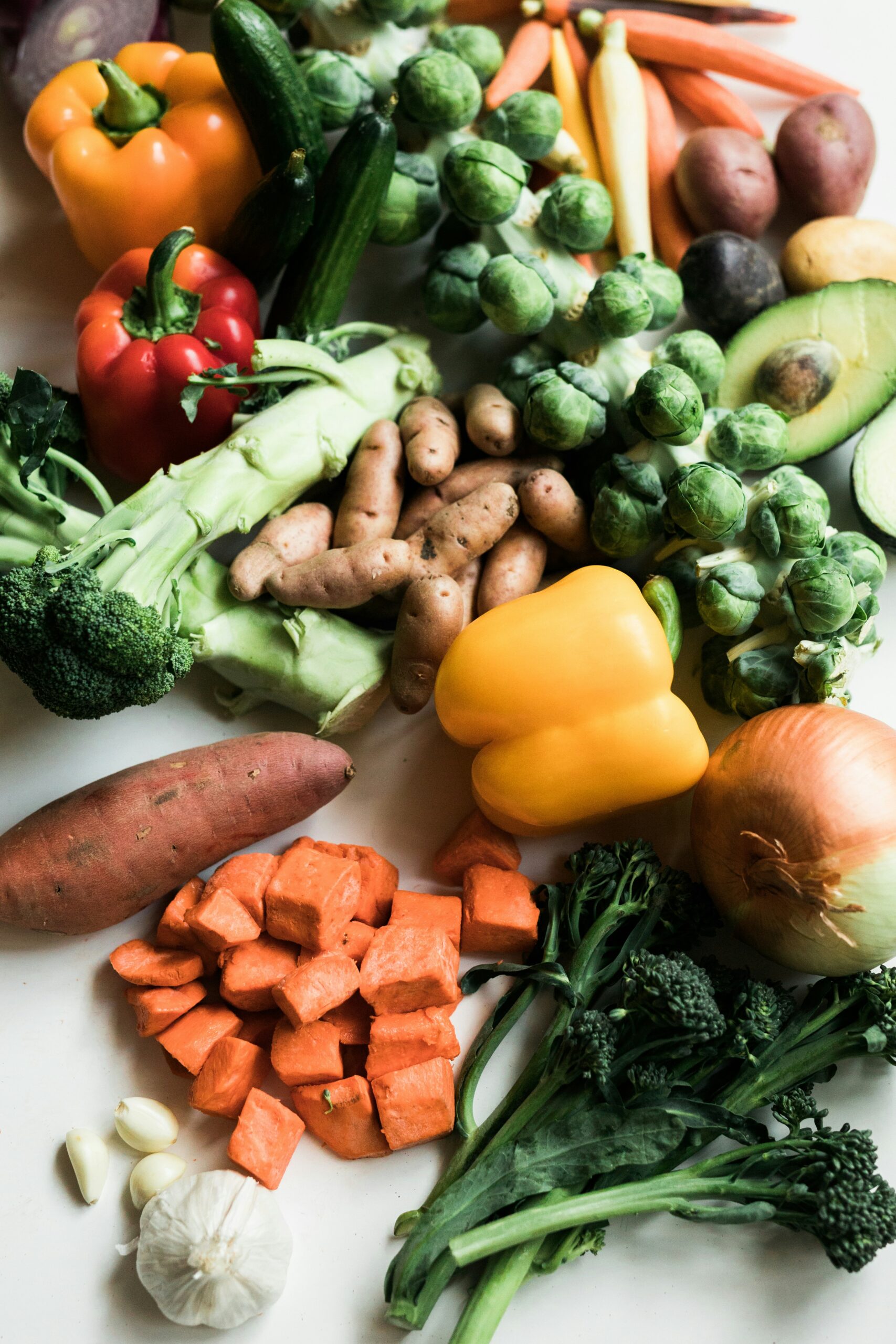If you’re a plant-based eater and exercise enthusiast, you probably get the “B
ut where do you get your protein?” question a LOT!
Protein is an essential part of any healthy, balanced diet so if you are plant-based and struggle with getting enough – good news!
With a little knowledge and planning, you can meet your protein needs easily and without relying on animal products.
While animal products are the most well-known protein sources, there are plenty of plant-based options that provide all the protein your body needs.
It’s all about making smart choices and being intentional with your meals.
Whether you’re a long-time vegan or transitioning to a more plant-based lifestyle, this blog’s providing you with 6 tips to nail daily protein needs so that you can boost your intake and maintain a balanced, healthy diet!
__________________________________________________________________________________________________________________
WHY YOU NEED PROTEIN!
Protein is essential to ensure your muscles, bones and organs are functioning optimally, especially when active and exercising regularly! Protein is responsble for:
• Building and repairing muscle tissues
• Supporting immune function and health
• Keeping appetite and hunger levels satisfied
As you age, muscle loss—known as sarcopenia—becomes more pronounced, particularly starting around age 30, with a 3-8% decrease in muscle mass per decade.
As protein synthesis (the process of building new muscle) slows with age, it becomes harder to maintain lean muscle mass, which is essential for your strength, mobility, and injury prevention.
Studies show people who don’t eat meat typically consume 30% less protein than those who eat meat, making it even more important to choose prtein rich plant-based options to stay healthy, happy and strong!
__________________________________________________________________________________________________________________
6 WAYS TO EAT (MORE!) PROTEIN
#1. Seek Complete Protein Sources
One of the key challenges for plant-based eaters is consuming all the essential amino acids—the building blocks of protein.
While many plant foods contain some amino acids, they may not be “complete” proteins containing all nine essential amino acids. However, there are several plant-based sources of complete protein:
- Quinoa: ancient grain commonly used in salads, grain bowls or as a side dish.
- Buckwheat: used in breakfast porridges, pancakes or as a base for savory dishes.
- Soy Products (Tofu, Tempeh, Edamame): Soybeans and their derivatives are some of the best sources of complete protein for plant-based eaters. Tofu and tempeh can be used in stir-fries, salads, or sandwiches, while edamame makes a great snack or salad topping.
- Chia Seeds: pack a protein punch and perfect addition to smoothies, overnight oats or yogurt for an easy protein boost.
#2. Combine Foods
If a single plant food isn’t a complete protein, you can combine foods via the process ”protein complimenting” to get all 9 essential amino acids.
And, you don’t need to consume complementary proteins in the same meal—just aim to eat a variety of plant foods throughout the day, and your body will naturally assemble the amino acids it needs.
My 4 favorite plant-based food pairings for getting all 9 essential amino acids:
- Rice and Beans: enjoyed in burrito bowls, soups or as a side dish.
- Peanut Butter and Whole Grain Bread: simple and effective pairing that provides a good dose of protein and all essential amino acids.
- Hummus and Pita: satisfying and protein-rich snack.
- Lentils and Barley: pair in soups, stews or grain bowls for a protein-packed meal.
#3. Eat Protein-Rich Whole Grains
When thinking about protein sources, don’t overlook whole grains like quinoa, farro and barley as these contain more protein than you might expect:
- Quinoa: 8 grams of protein per cup (cooked)
- Farro: 15 grams of protein per cup (cooked)
- Barley: 4 grams of protein per cup (cooked)
- Oats: 6 grams of protein per cup (cooked)
#4. Add Plant-Based Protein Powders
If struggling to meet protein needs, especially after workouts or during busy periods, plant-based protein powders can be a convenient solution. Many options are derived from sources like peas, hemp or brown rice and provide a concentrated dose of protein in a quick, easy-to-consume format.
Here are 3 ways to use plant-based protein powders:
- Smoothies: Blend your favorite fruits and veggies with a scoop of protein powder
- Oatmeal or Porridge: Stir a scoop of protein powder into your morning oats
- Baking: add plant-based protein powder to muffins, pancakes or energy bars
#5. Snack on High-Protein Plant Foods
Opt for snacks naturally rich in protein to keep you fueled throughout the day. Here are 4 plant-based, protein-rich snacks to try:
- Nuts and Seeds: almonds, pumpkin seeds, sunflower seeds and peanuts
- Roasted Chickpeas: a crunchy and excellent on-the-go snack.
- Nut Butters: spread almond or peanut butter on apple slices or rice cakes.
- Edamame: one cup of boiled edamame contains around 17 grams of protein!
#6. Eat Protein-Rich Vegetables
While vegetables aren’t typically known for protein content, there are a few that can help meet protein needs when consumed in larger quantities.
Here are 4 high-protein veggies to add to your meals. Try using these veggies in stir-fries, soups and grain bowls:
- Peas: 9 grams of protein per cup (cooked)
- Spinach: 5 grams of protein per cup (cooked)
- Broccoli: 4 grams of protein per cup (cooked)
- Brussels Sprouts: 4 grams of protein per cup (cooked)
Meeting your protein needs on a plant-based diet is entirely achievable with the right strategy.
By incorporating a variety of plant-based protein sources, combining complementary foods, and using protein-packed snacks and meals, you can ensure your body gets all the protein it needs to thrive.
By focusing on whole, nutrient-dense foods and using these protein hacks, plant-based eaters can easily maintain a healthy, balanced diet without worrying about protein deficiencies.
Whether you’re a seasoned vegan or just starting your plant-based journey, use these tips to build habits so that you can keep your protein intake in check and hit your goals!

